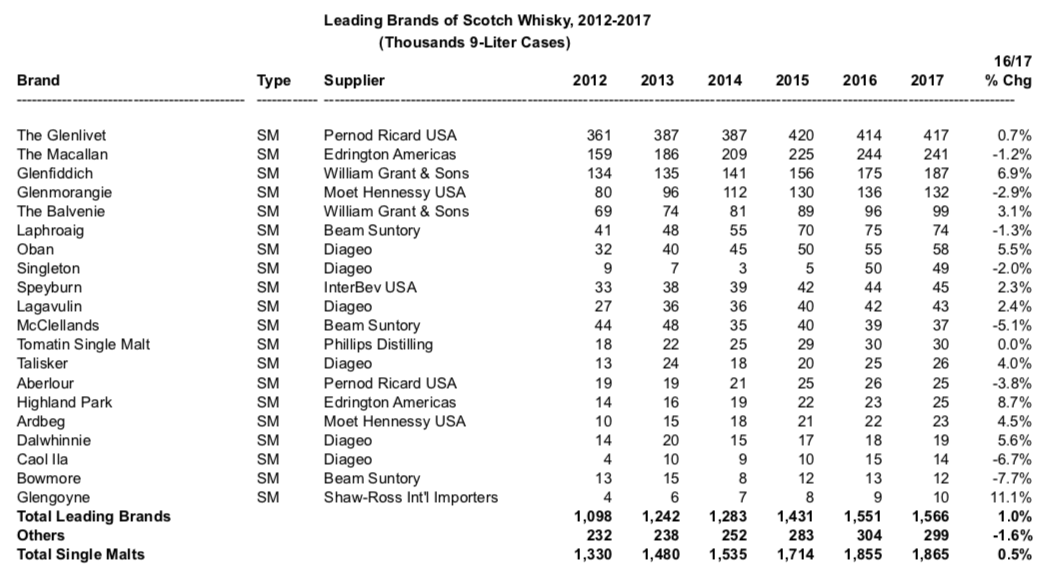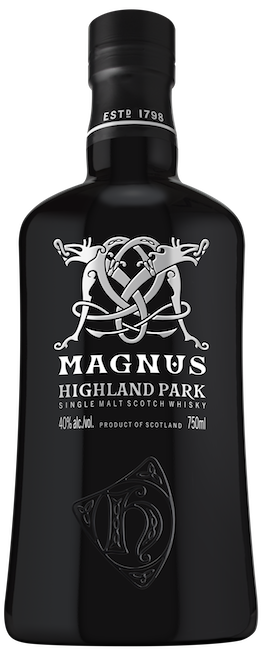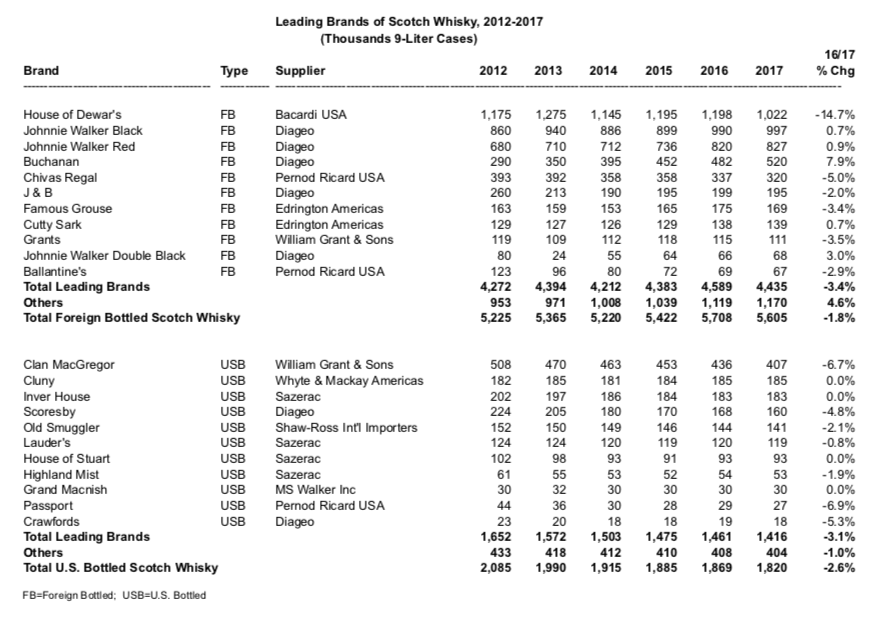It’s boom time for most brown spirits — but not Scotch.
The category is the rare whiskey/whisky that’s not rapidly rising in America. Overall, Scotch’s sales volume was down 1.5% in 2017 to 9.29 million 9-liter cases, according to data from the Beverage Information and Insights Group. Leading Scotch brands shrunk 2.4% to settle at 7.417 million cases in the U.S. last year.
Oddly, this comes after recent years of gradual growth for the category. Scotch reached a high-water mark of 9.432 million cases in the U.S. in 2016 — a gain of about 400,000 cases since 2015, and 800,000 since 2012.
What’s behind this sudden slowdown and decline?
Price is a major issue. Scotland imposes heavy taxes on its whisky. This pushes bottle prices higher than people may prefer. Younger consumers can be slow to enter the Scotch category when even basic bottles cost $50 or more. Instead, these consumers may purchase a more-affordable bottle of bourbon, Irish or Canadian whisky.

Another part of the problem is reputation. Scotch still suffers from the stigma as being stuffy. Some Millennials think of Scotch as what grey-haired men drink in parlors come evening time.
But other vintage spirits, like rye, have recently enjoyed a renaissance. Why not Scotch? Well, what’s fueled growth for other classic spirits is their role in the current mixology movement. Classic cocktails and recipes have become trendy again.
Problem is, few of these recipes call for Scotch. While producers have pushed for more Scotch cocktails — and the Penicillin proves that it can be done — the reputation remains that it’s blasphemous to mix with Scotch.
The category has also been slow to embrace innovation. Not enough Scotch brands have recently come out with creative, new takes — like barrel finishes or blends.

“If Scotch does not address their image and pricing issues, they will face another major tumble,” says Mike Raymond, owner of the whiskey bar Reserve 101 in Houston, TX. “The category needs to bring 20-somethings — both men and women — to the table. The category needs dynamic single-malt products priced around $25 to help attract a new generation of drinkers.”
Thankfully, the category has awoke recently to the benefit of experimentation. Brands like The Balvenie (+3.1% in 2017 sales volume to 99,000 cases) have led the way.The Balvenie offers a wide range of creative takes on Scotch, including novel blends and barrel finishes.

Highland Park is another brand that has recently come out with a range of new blends and other imaginative releases, helping the brand grow 8.7% to 25,000 cases in 2017. Among the new releases from Highland Park is Magnus. This is a single malt, available only in America and Canada, that costs around $40, and was finished in bourbon barrels. Producers behind Magnus were perceptive to the North American palate and price point. It’s no surprise that this Scotch has become a hit.
Blended, non-age-statement Scotches like Magnus had become more common recently. Why? Many producers do not have enough old product in barrels to meet demand for age statements. While the category was slightly down in 2017, enough consumers still bought age-statement bottles that there’s a dearth of older product. Thus, companies like The Macallan (-1.2% to 241,000 cases in 2017) have mixed together non-age-statement blends to help put new bottles on the shelves.
One brand that did well in 2017 was Glenfiddich. It enjoyed +6.9% in growth last year to reach 187,000 cases. This William Grant & Sons brand benefits from consumers who think of Glenfiddich as an approachable whisky — an entry-level Scotch.
Along the same lines, Oban, the Diageo-owned Scotch, was up 5.5% to 58,000 cases. This is another brand that many people recommend to first-time Scotch drinkers for its smooth drinking profile and approachable flavors.
The top-selling Johnnie Walker brands have remained relatively flat, but the brand has reacted to problems that ail Scotch with a number of creative products. The Johnnie Walker Blenders’ Batch series are more-affordable Scotches finished in barrels that better reflect the American palate. They are also meant to be drank neat or mixed into a cocktail. The bottles highlight the blenders behind the mixes, adding another sense of craft and handmade quality to the releases.

The best-selling Scotch in America, House of Dewar’s, was down 14.7% in 2017 to end at 1.022 million cases. This follows a recent pattern of up-and-down sales for the Bacardi-owned brand.
What’s next for Scotch? As Raymond says, the category would be wise to invest more resources in producing less-expensive bottles that contain more-innovative liquids. It sounds difficult, and will be — and the hefty taxes on Scotch will not help. But producers behind the category in Scotland continue to rally for lowered taxes. That would go a long way towards opening up room for experimentation that this category badly needs in order to shed its old-fashioned reputation, and tap into youngerAmerica drinkers who buy up brown spirits that showcase innovation.
Kyle Swartz is editor of Beverage Wholesaler. Reach him at kswartz@epgmediallc.com or on Twitter @kswartzz. Read his recent piece Why Treasury Wine Estates Invested in AR Technology.









